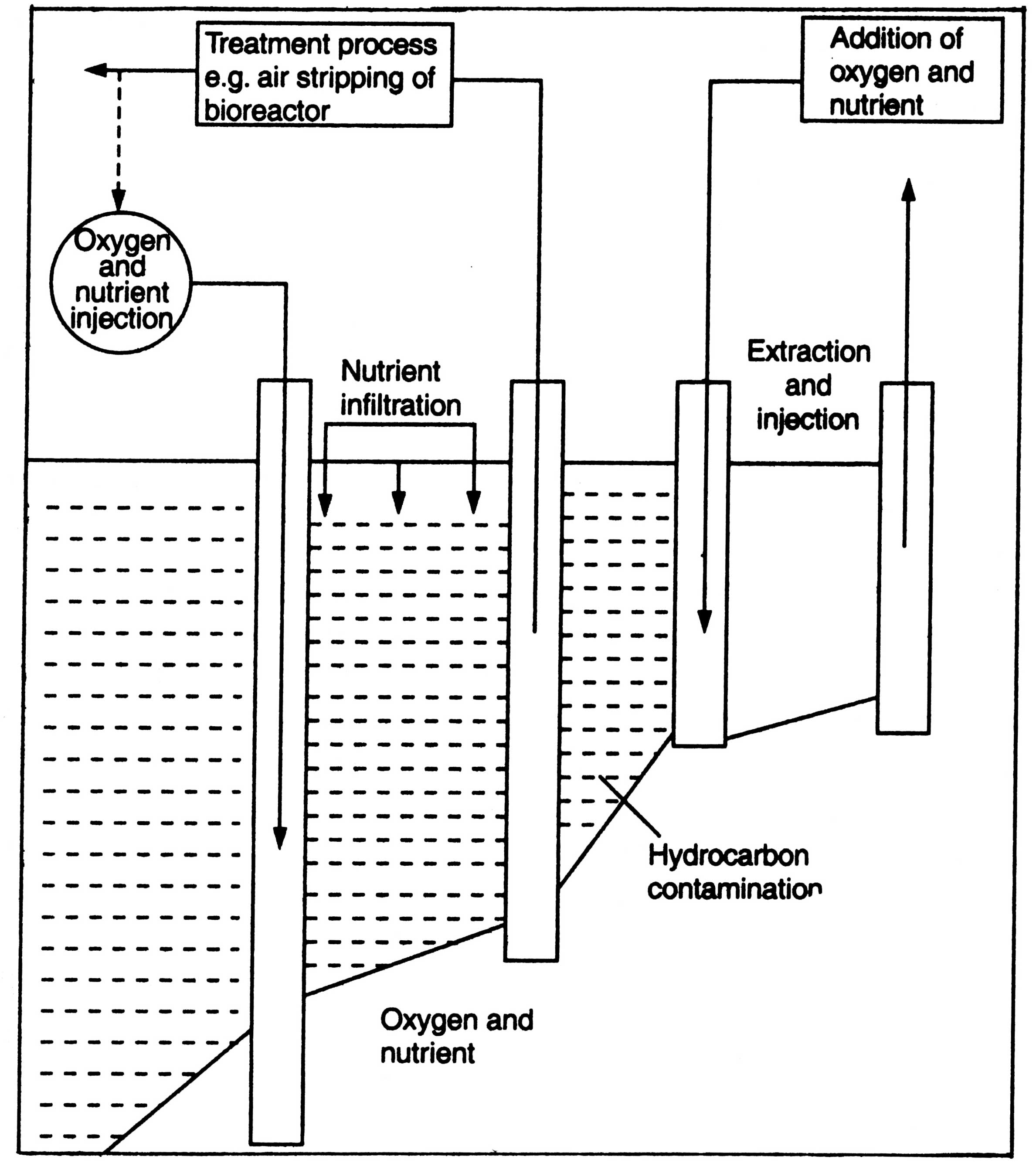In situ Bioremediation
Conversion of environmental pollutants into the harmless forms through the innate capabilities of naturally occurring microbial population is called intrinsic bioremediation. However, there is increasing interest on intrinsic bioremediation for control of all or some of the contamination at waste sites. The intrinsic i.e. inherent capacity of microorganisms to metabolize the contaminants should be tested at laboratory and field levels before use for intrinsic bioremediation. Through site monitoring programmes progress of intrinsic bioremediation should be recorded time to time. The conditions of site that favor intrinsic bioremediation are ground water flow throughout the year, carbonate minerals to buffer acidity produced during biodegradation, supply of electron acceptors and nutrients for microbial growth and absence of toxic compounds. The other environmental factors such as pH, concentration, temperature and nutrient availability determine whether or not biotransformation takes place. Bioremediation of waste mixtures containing metals such as Hg, Pb, As and cyanide at toxic concentration can create problem (Madsen, 1991).
The ability of surface bacteria to degrade a given mixture of pollutants in ground water is dependent on the type and concentration of compounds, electron acceptor and duration of bacteria exposed to contamination. Therefore, ability of indigenous bacteria degrading contaminants can be determined in laboratory by plate count and microcosm studies.
Engineered in situ Bioremediation

Fig. 21.1. Surface treatment using above-ground reactor, injection of oxygen, acid nutrient and extraction walls.
Intrinsic bioremediation is satisfactory at some places, but it is slow process due to poorly adapted microorganisms, limited ability of electron acceptor and nutrients, cold temperature and high concentration of contaminants. When site conditions are not suitable, bioremediation requires construction of engineered systems to supply materials that stimulate microorganisms. Engineered in situ bioremediation accelerates the desired biodegradation reactions by encouraging growth of more microorganisms via optimizing physico-chemical conditions (Bouwer et al, 1998). Oxygen and electron acceptors (e.g. NO31- and SO42-) and nutrients (e.g. nitrogen and phosphorus) promote microbial growth in surface.
When contamination is deeper, amended water is injected through wells. But in some in situ bioremediation systems both extraction and injection wells are used in combination to control the flow of contaminated ground water combined with above-ground bioreactor treatment and subsequent reinjection of nutrients spiked effluent are done (Fig. 21.1).




